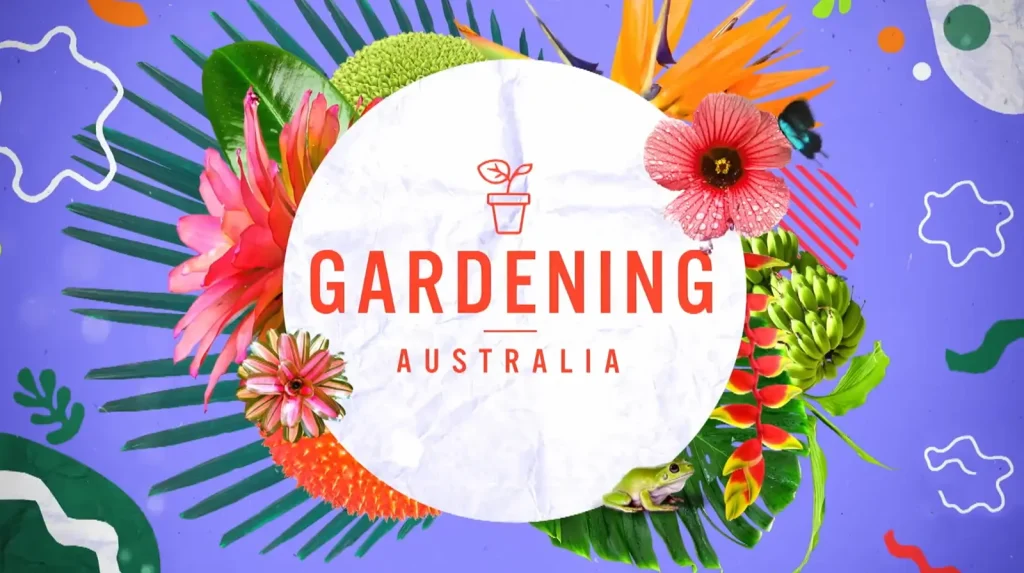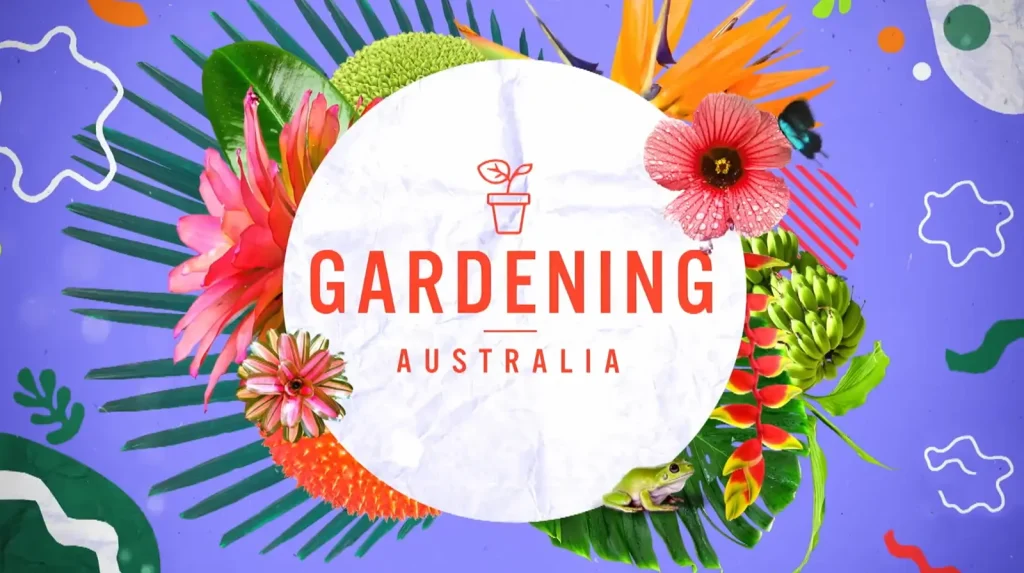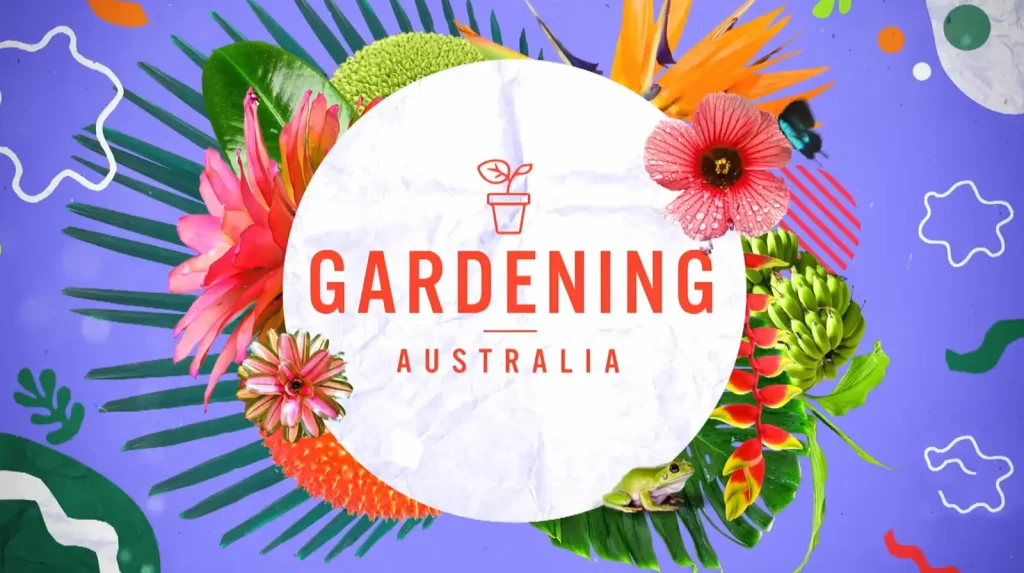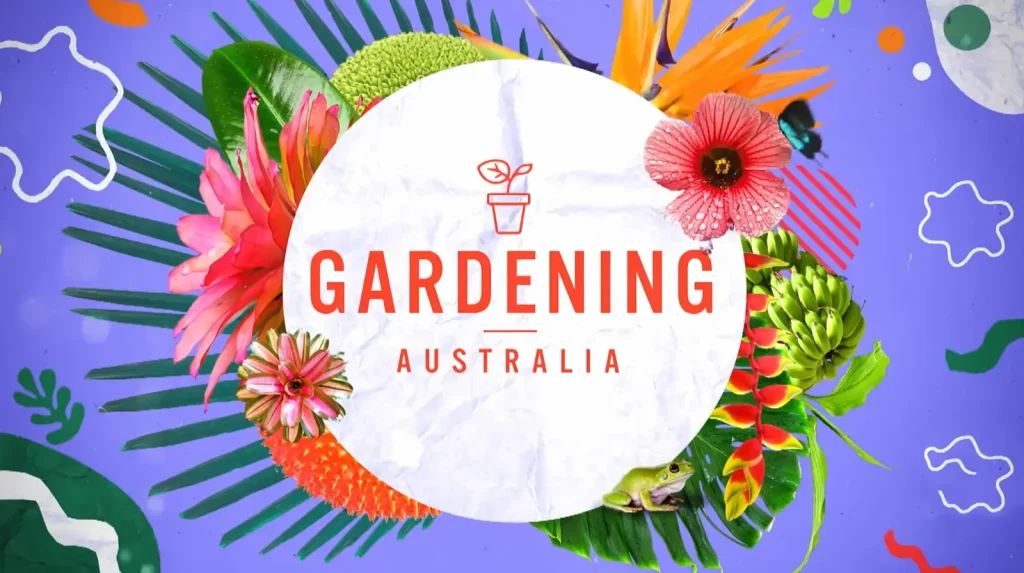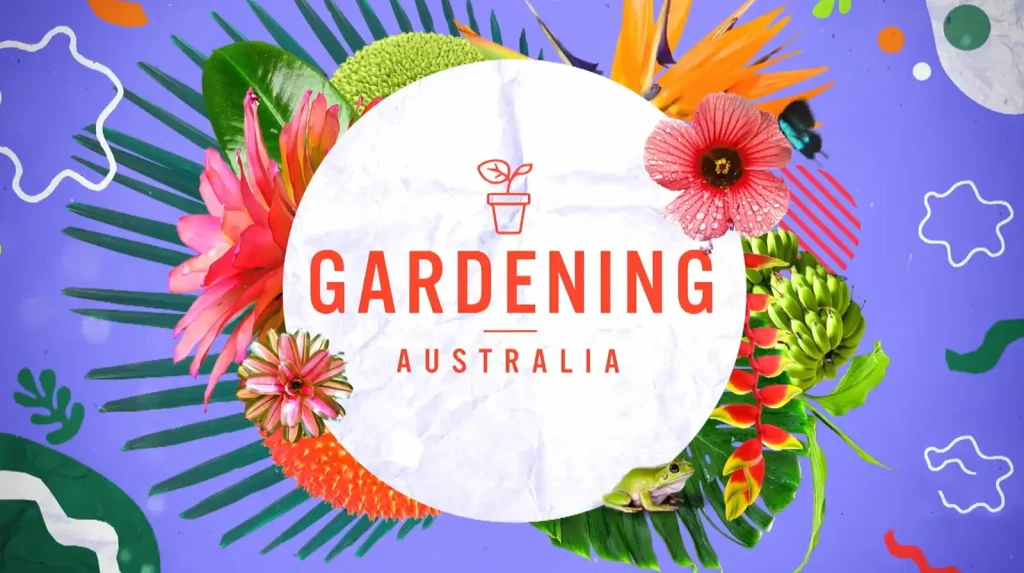Gardening Australia 2024 episode 14: In the bustling season of autumn, “Gardening Australia” unveils its 14th episode of 2024, showcasing a rich tapestry of sustainable and innovative gardening practices. This episode invites viewers to immerse themselves in a variety of projects that celebrate both traditional techniques and pioneering eco-friendly practices.
The episode begins with Costa Georgiadis taking on his indispensable autumn checklist. With a keen eye and years of experience, Costa guides viewers through essential seasonal tasks. From preparing soil for the upcoming cooler months to selecting the perfect autumnal plants for vibrant color and harvest, his expertise shines as he provides practical tips and tricks to enhance any garden’s autumn readiness.
Next, we visit Jane Edmanson as she explores an exceptional garden that challenges the conventional limits of a renter’s space. This prolific edible garden, cultivated with love and creativity, not only thrives within its temporary boundaries but also serves as a powerful example of what is possible in rental accommodations. Jane’s tour highlights innovative gardening techniques that maximize space and yield, inspiring renters everywhere to transform their transient plots into bountiful havens.
Meanwhile, Millie Ross tackles a new project that champions sustainability — building a no-dig raised bed. This segment demystifies the no-dig method, illustrating how it preserves soil structure, enhances microbial activity, and promotes healthier plant growth. Millie’s step-by-step guide on constructing and maintaining a no-dig bed offers viewers an accessible entry into more sustainable gardening practices that require less labor and yield greater rewards.
Further south, Sophie Thomson takes us to an innovative eco-vineyard that stands as a beacon of environmental stewardship in the wine industry. This segment not only showcases the vineyard’s cutting-edge methods for sustainable viticulture but also delves into how such practices can improve the quality of the wine while drastically reducing environmental impact. Sophie’s visit provides a captivating look at the synergy between agricultural productivity and ecological responsibility.
The episode concludes with a fascinating feature on a duo of artists who specialize in straw marquetry. This traditional craft, which involves the intricate arrangement of straw to create beautiful, detailed artworks, is celebrated for its sustainable use of materials and the revival of a nearly forgotten artistic technique. The artists share their process, from selecting the right straw to the meticulous placement of each piece, offering viewers insight into the patience and precision required to master this unique art form.
Together, these segments form a cohesive narrative that paints a vivid picture of how traditional gardening techniques and modern innovations can coexist harmoniously. “Gardening Australia’s” 2024 autumn episode not only educates but also inspires its audience to consider how they can integrate these practices into their own gardening endeavors for a more sustainable and productive future.
Gardening Australia 2024 episode 14
Renter Digs
Jane’s journey to the gardener’s haven in Melbourne’s outer east is a testament to the transformative power of dedication and love for the land. Despite the transient nature of her tenancy, Jess Peeler has woven her dreams into the very fabric of her rented plot, turning it into a verdant oasis of productivity and beauty.
As Jane walks through the garden, she marvels at the lushness that surrounds her. What was once a mundane lawn has now blossomed into a tapestry of life, bursting with flowers, fruits, and vegetables. Jess’s vision knows no bounds as she experiments with different plants, eager to discover what thrives in this urban sanctuary.
The back garden, once a blank canvas, now teems with life. Fruit trees, lovingly planted by Jess’s mother, stand as guardians of abundance, while beds overflowing with a riot of colors offer sustenance to both humans and wildlife alike. Along the path, narrow raised beds host a cornucopia of delights, from the whimsical cucamelons to the exotic jaboticaba, each a testament to Jess’s boundless creativity.
But it’s not just about plants; it’s about community too. The chickens, affectionately dubbed “Chook TV” by Jess and Adrian, are more than just egg-layers; they’re beloved companions, their antics providing endless entertainment. And in the midst of it all stands the swimming pool, a relic of the past that Jess dreams of transforming into yet another thriving ecosystem.
Despite the challenges of renting, Jess’s passion knows no bounds. Every corner of the garden tells a story of resilience and hope, a testament to the human spirit’s ability to thrive in even the most transient of spaces. And as Jane bids farewell to this green oasis, she can’t help but feel inspired by Jess’s unwavering dedication to her craft.
In just two short years, Jess has turned her rented plot into a haven of biodiversity and abundance. But her journey is far from over; fueled by her dreams and fueled by her love for the land, she looks to the future with excitement, knowing that wherever life may take her, her garden will always be her home.
Essential Autumn Gardening Tips from Gardening Australia
Autumn is a crucial time for gardeners, as the days grow shorter and cooler, signaling a shift in garden maintenance tasks. To ensure your garden thrives through the autumn months and beyond, Costa from Gardening Australia shares some invaluable tips and tricks for essential autumn gardening.
Secateur Maintenance
Secateurs are an indispensable tool for any gardener, and proper maintenance ensures they remain effective for years to come. Costa emphasizes the importance of investing in high-quality secateurs that can be maintained. Regular cleaning after each use is essential, but an annual deep clean is also necessary.
- Cleaning: After use, clean the secateurs thoroughly to remove any sap or debris. Once a year, dismantle them and soak the components in a cleaning agent such as methylated spirits. Scrub the parts to remove any buildup.
- Sharpening: Keep the secateur blade sharp for clean cuts. Ensure a 20-30-degree angle when sharpening the blade to maintain its effectiveness.
- Oil: After reassembly, apply a light oil to lubricate the secateurs and keep them functioning smoothly.
Maintaining Compost
Composting is a cornerstone of sustainable gardening, providing nutrient-rich soil for your plants. Costa advocates for a balanced approach to composting, emphasizing the importance of moisture and aeration.
- Moisture Level: Test the moisture level of your compost by squeezing a handful. Ideally, it should resemble a moist sponge, with one or two drops of water. Adjust the moisture content by adding dry materials such as leaves or shredded paper for wet compost and greens for dry compost.
- Aeration: Regularly turn the compost to introduce air and mix the ingredients. This aerates the compost pile, speeding up decomposition and preventing unpleasant odors.
- Application: Once the compost is ready, incorporate it into your garden soil to enrich it with nutrients. This nourishes the soil and promotes healthy plant growth.
Lawn Care
Don’t neglect your lawn during autumn; proper care ensures lush greenery year-round. From aeration to fertilization, Costa shares essential lawn maintenance tips.
- Aeration: Improve soil aeration by using a garden fork or mechanical aerator to perforate the lawn surface. This encourages root growth and improves water and nutrient absorption.
- Top Dressing: Apply a layer of compost or a specially formulated mix to the lawn surface. This fills in uneven patches, feeds the grass, and enriches the soil with organic matter.
- Fertilization: Choose a well-balanced, slow-release fertilizer and apply it to the lawn, preferably on a rainy day. This provides essential nutrients for healthy grass growth.
Unveiling the Beauty of Everlasting Daisies
The Diverse World of Australian Daisies
Clarence’s exploration of Australian daisies unveils a diverse family boasting over 1000 species within Australia alone. Beyond their aesthetic appeal, daisies serve as vital sources of sustenance for bees, butterflies, and various insects. Contrary to their seemingly singular appearance, each daisy ‘flower’ comprises numerous individual flowers in its central disc, offering abundant pollen and nectar to passing pollinators. The vibrant papery outer ‘petals’ are, in fact, modified leaves known as bracts.
The Charm of Everlasting Daisies
Among the myriad of Australian daisies, the everlasting daisies, also referred to as paper daisies, stand out with their enduring beauty. These flowers retain their shape and color for extended periods, making them a delightful addition to any garden. Planting everlasting daisies in late autumn or early winter in a sunny, weed-free area promises a stunning spring display.
Cultivation and Varieties
Thanks to extensive cultivation efforts by plant breeders, perennial varieties of everlasting daisies now abound in a plethora of colors and sizes, suitable for diverse climates. Notable examples include ‘Dargan Hill Monarch,’ a compact shrub boasting vibrant yellow flowers, and ‘Daisy Fields Gold,’ characterized by creamy white bracts adorned with gold florets in the central disc. Regular light pruning encourages more prolific flowering, ensuring a continuous spectacle of color.
Beyond Everlasting Daisies
In addition to everlasting daisies, the botanical realm offers a rich tapestry of options. The common everlasting, Chrysocephalum apiculatum, presents a profusion of small button yellow flowers against a backdrop of grey or grey-green foliage, thriving as a spectacular groundcover in moist, moderately drained soil. For those seeking taller specimens, Ozothamnus, commonly known as rice flower, proves an excellent choice. Flourishing in sunny locations with well-draining soil, this plant boasts flat heads of massed flowers and serves admirably as a cut flower.
Explore and Discover
The world of daisies is as diverse as it is enchanting, with endless possibilities awaiting exploration. Whether opting for the enduring allure of everlasting daisies or venturing into the realm of other botanical marvels, gardeners are encouraged to embark on a journey of discovery, embracing the beauty and bounty of nature’s offerings.
F.A.Q. for Gardening Australia 2024 Episode 14: Autumn Gardening Innovations
Q.: What is the focus of Gardening Australia’s 2024 Episode 14?
A.: Episode 14 of “Gardening Australia” 2024 centers on a rich array of sustainable and innovative gardening practices suitable for the autumn season. It features expert advice on seasonal gardening tasks, explores a renter’s prolific edible garden, introduces a sustainable no-dig gardening method, visits an eco-friendly vineyard, and highlights the art of straw marquetry. The episode is designed to inspire gardeners to integrate traditional techniques with eco-friendly innovations.
Q.: How does Costa Georgiadis help gardeners prepare for the cooler months in this episode?
A.: In this episode, Costa Georgiadis addresses essential autumn gardening tasks with his autumn checklist. He guides viewers through preparing the soil for planting, choosing autumnal plants that offer vibrant colors and bountiful harvests, and shares practical tips to ensure gardens are ready to withstand the cooler months. His advice is aimed at helping gardeners maintain a lively and productive garden through autumn and beyond.
Q.: Can you describe the innovative gardening techniques featured in Jane Edmanson’s segment on a renter’s edible garden?
A.: Jane Edmanson visits a unique edible garden cultivated in a rental property, showcasing how temporary spaces can be transformed into vibrant, productive areas. The segment highlights creative space-maximizing gardening techniques like vertical gardens, container planting, and companion planting, which allow renters to make the most of limited space while still enjoying a lush garden full of vegetables, herbs, and flowers.
Q.: What are the benefits of the no-dig gardening method demonstrated by Millie Ross?
A.: Millie Ross’s segment on the no-dig gardening method emphasizes its benefits for both soil health and plant growth. This method involves layering organic materials on top of the soil, which decomposes over time, enhancing soil structure and fertility without the need for traditional tilling. It is shown to promote microbial activity, reduce weed growth, and improve water retention, making gardening more sustainable and labor-efficient.
Q.: What eco-friendly practices are highlighted during Sophie Thomson’s visit to an eco-vineyard?
A.: Sophie Thomson’s visit to an eco-vineyard highlights several groundbreaking eco-friendly practices in viticulture. These include using organic pest control, implementing water conservation techniques, and adopting soil management practices that increase biodiversity and reduce the vineyard’s carbon footprint. The segment illustrates how these practices not only support environmental sustainability but also potentially enhance the quality and flavor of the wine produced.
Q.: What is straw marquetry, and why is it featured in this episode?
A.: Straw marquetry is an artistic technique that involves the use of straw to create intricate, decorative patterns on various surfaces. This craft is featured in the episode as an example of sustainable art, utilizing natural and readily renewable materials to produce stunning artworks. The segment with the straw marquetry artists shows the meticulous skill required and discusses the importance of preserving such traditional crafts in modern times.
